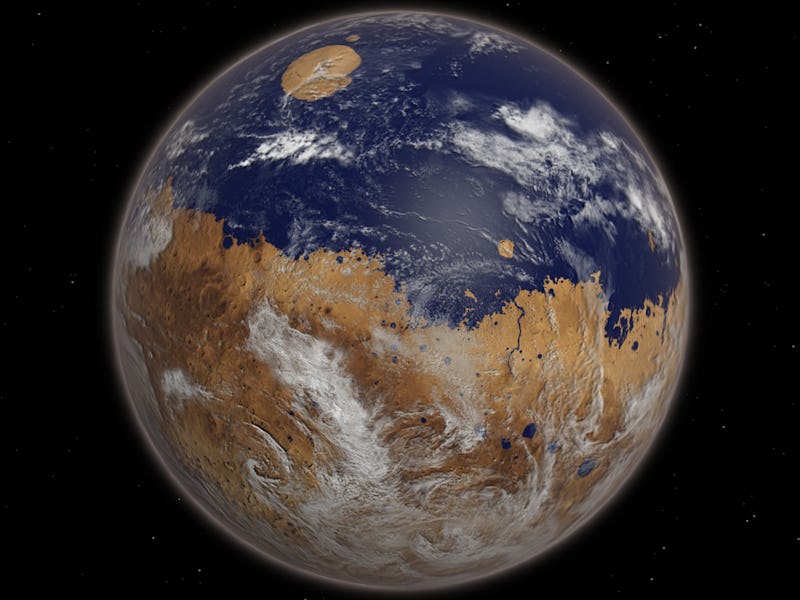Mars Once Had Way More Oxygen in Its Atmosphere Than We Thought
The red planet turns out to be even more Earth-like than we ever imagined.

Turns out, Mars used to have a lot more oxygen than scientists thought. A new study published in Geophysical Research Letters finds that NASA’s Curiosity rover has found chemicals in the red rocks that suggest the Mars possessed an atmosphere that retained a much higher oxygen content than it currently does — giving a more Earth-like chemical composition that goes hand-in-hand and ancient Mars once teemed with vast lakes and oceans on the surface, and used to have a robust atmosphere.
Curiosity has a little instrument called the ChemCam that recently picked up high levels of manganese oxides in rocks lining the Kimberly region of the Gale crater. The existence of this element supports the notion that free oxygen once flowed across the Martian surface, during a time when the planet was warmer.
“The only ways on Earth that we know how to make these manganese materials involve atmospheric oxygen or microbes,” says lead study author Nina Lanza in a news release. “Now we’re seeing manganese-oxides on Mars and wondering how the heck these could have formed.”
NASA's Curiosity Mars rover at a location called "Windjana," where the rover found rocks containing manganese-oxide minerals, which require abundant water and strongly oxidizing conditions to form.
Microbes are a possibility — after all, scientists are dying to know whether primitive life ever did or currently does exist on Mars — but an atmosphere with oxygen seems much more plausible. “These high manganese materials can’t form without lots of liquid water and strongly oxidizing conditions, said Lanza. “Here on Earth, we had lots of water but no widespread deposits of manganese oxides until after the oxygen levels in our atmosphere rose.”
The question remains: how did an oxygen-rich environment form on the surface of the planet? Lanza and her team speculate that at the time Mars was losing its magnetic field — and therefore its atmosphere — Mars’ vast bodies of water began to break up. From the water, oxygen was freed up and began to permeate the air in a much greater abundance. That oxygen also spilled into the bedrock and created the rusty color that gives the red planet its nickname today.
Of course, solar winds continued to strip Mars of its atmosphere as the magnetic field was shed, and all the oxygen seems to have disappeared into the cosmos.
“It’s hard to confirm whether this scenario for Martian atmospheric oxygen actually occurred,” says Lanza. “But it’s important to note that this idea represents a departure in our understanding for how planetary atmospheres might become oxygenated.”
And of course, an oxygen-rich Mars could have boosted the chances life could have evolved on the planet. Oxygen is an incredibly important component of life on Earth, and if conditions were just right, microbial life resembling Earthly organisms might have spawned on an ancient Mars.